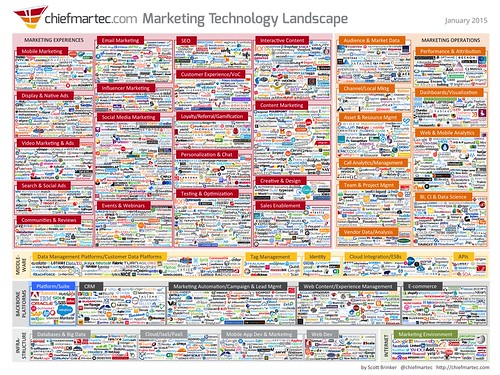Ever gone to a big-box home improvement store? I certainly have. They’re a DIYer’s paradise most of the time. My favorite section is usually the sharp objects portion of the store, where the knives, axes, machetes, and other pointy things are kept.
When you’re in the store looking for tools or supplies, how do you decide what to buy?
I recently bought a new electric screwdriver; this is the general process of how that happened. First, you have to get a sense of where to look. Screwdrivers and refrigerators aren’t going to be in the same section. Taxonomy counts! Once you’re in the correct general section of the store, you look up to find the aisle you should be in. After you locate the aisle, you find the section of shelf that contains the products you want.
Once you’re at the shelf, how do you determine what’s the best tool to buy? Most people, like me, first look at the prices. What can I or can’t I afford? Not much point looking at DeWalt if you can only afford Ryobi. After you’ve found the price bracket that you can afford, you start comparing features in that set:
- How many volts does the screwdriver have?
- What kind of battery?
- Most important to me, what warranty is on the box? Manufacturers generally make warranties last only as long as they expect the tool to last. A product with a 1 year warranty means that in the lab, in 366 days the product probably fails.
For tools, which are things I tend to break in fairly short order, warranty is the feature that makes or breaks what I buy in my price bracket.
Compare this to how we select marketing tools. Is the process similar? I’d argue that many marketers begin the process lost. They’re not even in the right section of the store or looking at the right aisle. A fair few marketers I’ve talked to ask about analytics tools when they’re really talking about monitoring tools. They ask about media tools but their goals are really lead generation. If you’re selling people marketing tools, or if you’re buying marketing tools, know what section of the store you need to be in. I strongly recommend thinking of Scott Brinker’s MarTech landscape as a map of the marketing tools store:
Once you know you’re in the right section, think about how we normally buy and then think about how vendors sell. Vendors sell by pushing features and benefits hard, and a fair few dodge any question on price. I’ve even had a vendor say that they don’t discuss pricing until after a demo. Almost needless to say, that vendor never got a followup call.
Work with vendors who disclose their pricing up front so you know what you can and can’t afford. Finally, once you’ve narrowed down the pricing bracket, decide what feature is going to be most important – and that the vendor provides it.
For example, I recently tried Act-On Software, a marketing automation tool. The tool seemed promising, but Act-On’s main benefit was their support and on-boarding. This was a mismatch. I’m a highly technical user; I wanted them to give me the setup information like SPF records, then get out of my way so I could speed through setup and be productive immediately. They wanted to hand hold me through the process and refused to give me the data I wanted until after I finished the on-boarding process and training. I canceled the service within a week. Is their service bad? No. It’s just not the way I work. It’d be like a screwdriver that required me to complete a tutorial before using it. Some people would want that and absolutely love it if products worked like that. I’d return it immediately.
This comparison to how you normally shop should give you an idea of how to more carefully evaluate marketing technology vendors:
- Make sure you’re in the right section of the store.
- Find the price bracket you can afford.
- Look for the key feature that’s most important to you and see which product has the most of it.
With that, your marketing technology tool selection should be a little easier!
You might also enjoy:
- Almost Timely News: Principles-Based Prompt Engineering (2024-02-25)
- You Ask, I Answer: Retrieval Augmented Generation for Tax Law?
- Almost Timely News, Febuary 18, 2024: From Comment to Content
- You Ask, I Answer: AI Works And Copyright?
- Fireside Chat: Geraldine Deruiter on Food, Feminism, and Fury
Want to read more like this from Christopher Penn? Get updates here:
 Take my Generative AI for Marketers course! |




Leave a Reply